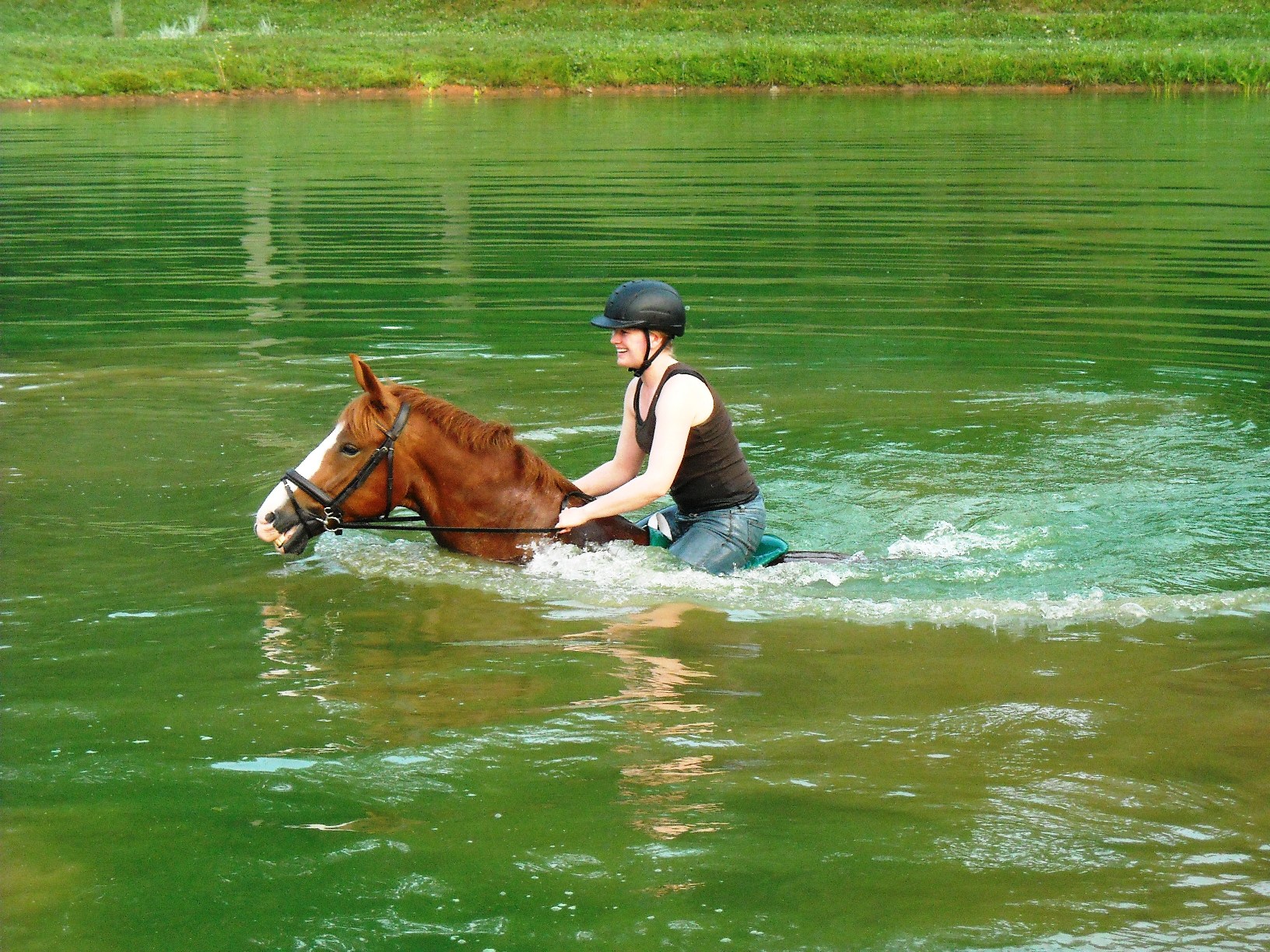At the end of the day, dressage competition is done in a 20- by 60-meter arena, with perfectly manicured footing, and as such that’s where we spend a fair amount of our training time.
But staying within the confines of the Little White Box is a great way to make a rider crazy, and forget what it does to the horse, a creature evolved from wandering grazers, although admittedly every time one of my fancy Dutch things goes catapulting through the air because he’s spotted a leaf or a bird, I am reminded of how much smart the domestication process has apparently taken out.
Terrifying birds and leaves aside, cross training is, in my opinion, crucial for the proper development of the dressage horse, not to mention a welcome breath of fresh air in a training process that, even done by the best, is inevitably full of periods of tedious repetition. And I am so lucky as to work out of 135 acres of gorgeous Virginia countryside that allows my horses, my students and I to play with lots of fun options. Here are some of the things we do to think outside the box.
1. Hillwork
My team and I hack our horses lightly after almost every ride as part of the cool down process, and we often replace a daily ride at the end of the week with a hacking day instead. But I also have some fabulous hills on the front of my property where I can do some invaluable work to help challenge my horses muscles in a way that work on the flat, immaculately-maintained surface of my arenas cannot. We speak often of encouraging a dressage horse to move in an uphill way, and so doing work actually up a hill is, of course, a great way to work. I love schooling tempi changes and medium trot going uphill, to help a horse find that upward “jump” we love to see in the showring.
But I actually love working horses going downhill. A great way to help a young horse find collected canter is to school them down a hill (carefully, of course, because in the beginning it’ll feel a bit like an avalanche); if they do not want to become a rolling stone gathering no moss, they have to engage their own haunches and collect themselves.
ADVERTISEMENT
My more advanced horses school piaffe downhill, with the same effect; the haunches must come under much more going down an incline. And schooling canter and walk pirouettes on a hill allows me to get both the uphill and downhill benefits in each movement, not to mention improving their dexterity and rideability.
2. Cavaletti
Yes, we do set up cavaletti in the arena, but it’s not just “ring work.” Every Sunday we work cavaletti into the work of almost every horse on the farm. It improves their agility, and makes them think about where their legs are. It’s oh-so-fun for the riders, even at the lowest levels. It’s a TREMENDOUS benefit to their balance, because they can’t get ahead or behind their horses lest they get bounced all over the place.
And we can do some very clever things with the young and developing horses to help improve their dressage skills: work over a “fan” of poles to help expand and compress their gaits, and trotting over high, short-distance poles to improve technique for piaffe and passage.
Lots of dressage programs jump their young horses; I’m too big a chicken for that, having never jumped as a kid and now being way to big a weenie to do it on a regular basis, but for me, cavaletti is a nice way of splitting the difference.
3. Swimming
Yes, you read that right—swimming. We have a fabulous pond on one corner of the property with a safe, gently sloping area so we can take our horses into the water. Some are just interested in wading and splashing around, and some we could not get within viewing distance of the water without suffering significant heart failure, but you’d be amazed at how many of even our highest-strung, high-performance athletes think they’re part hippopotamus, and go for the gusto.
Two of the best swimming horses on the property? Danny and Midgey. They’re basically fish.
ADVERTISEMENT

We’re not really set up to treat swimming as a significant exercise program, but there are places set up to do so, including a pool in nearby Middleburg where horses can do laps. We do sometimes use our pond like a water treadmill, and can do some light resistance walking to help improve fitness and strength without taxing legs. And one obligatory warning: since the horse does push out behind with his hind legs when he swims, it can put some torque onto the sacroiliac joint which, in a dressage horse where we do NOT want out behind and DO want under, extensive swimming can be counterproductive, so consult your veterinarian.
But goofing around on really hot summer days isn’t going to hurt anybody, unless you fall off, in which case I strongly recommend falling off IN the water instead of on dry land. We have a few skunky bridles we use so we don’t waterlog our nice ones, and we use old stirrup leathers as neck straps to hang on to. I’ve also used a bareback pad, for the horses who have pointy withers. And always, always, ALWAYS wear a helmet!
What do you do to get your competition horses out of the ring?














